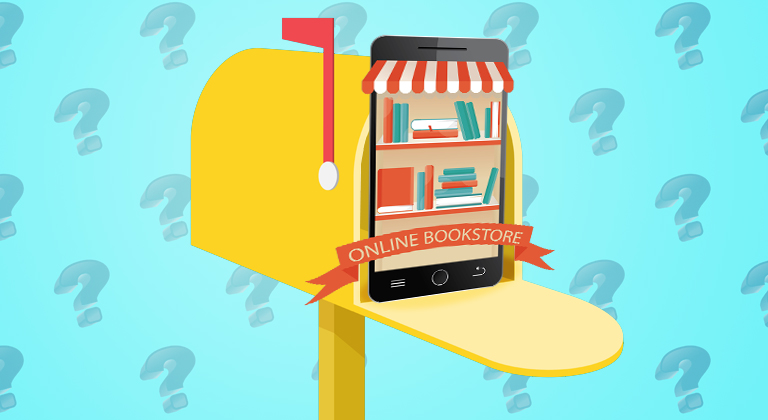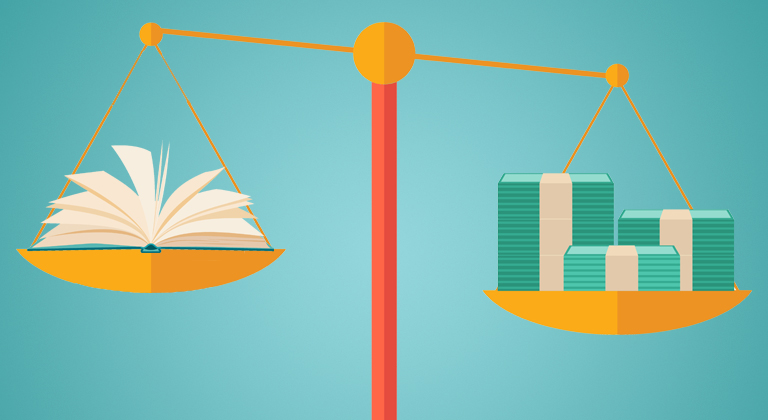From the Mailbox: Direct Sales Success
Once in a while, a topic discussed on the blog generates more questions than usual and sharing the answers with the community would be more beneficial than simply replying directly to the author. Ginger’s recent Direct Sales series is one such example of this, where the interest in the topic has been high and some of the questions being asked are shared by many.
Skipping the big online book retailers to sell directly to readers is a beefy topic, but one that is becoming more popular these days. Still, direct sales success is by no means a given, even if you can navigate your way through the complexity of the initial setup. There are other factors that go into whether it is right for you, and the questions Ginger is answering today reflect some of those concerns.
I recently completed a series of blog posts outlining my experiences with direct sales – bypassing Amazon entirely as a platform to sell my books and experimenting with hosting and selling them directly to readers instead.
The posts received a lot of interest! It seems like direct sales is potentially going to be one of the most important income streams for authors moving forward, as there are all sorts of challenges to being able to advertise your books profitably if you still sell them exclusively on Amazon.
Direct sales is a little bit more involved than going “wide for the win” but still follows the philosophy that perhaps authors shouldn’t put all their literary eggs in the same basket.
Following my blog series, I received a few questions from readers and thought it might be worth having a follow-up post to share my answers. If you have any questions of your own, don’t be shy about adding them in the comment section beneath this post. If we get some good ones, I might revisit this topic yet again in a future blog post.
Here are what people have been asking:
I’m interested in selling my books directly to readers. How easy is it to set up a direct sales funnel?
Great question! And the simple answer is: As easy as you want it to be!
A better question is: How easy is it to set up a direct sales funnel that works?
Because that’s the real question. When you first published your books on Amazon and started running Facebook ads pointing to your product page, you’d already created a funnel – it’s just a funnel that has proven more and more challenging to make a profit from.
Taking the plunge and creating your own direct sales funnel doesn’t necessarily mean it will be profitable either – it’s just that you have a lot more control about whether or not you can fix it. However, there are a lot of moving parts involved in making that happen, and choices you’ll have to make that determine whether it will be successful or not.
What you have to remember is that your direct sales funnel isn’t the Field of Dreams – “If you build it, they will come.” You’ve got to be sending your potential customers on a journey that makes them excited to eventually click the “buy now” button – and then you’ve got to make sure that journey continues with the safe delivery of your ebooks. It’s got to be a seamless route from first-click to final-purchase – at least as seamless as the experience of buying from Amazon directly, and ideally even more so.
And as anybody who’s ever been involved in eCommerce will tell you, that’s a lot more complicated than it might look. Remember that every click you receive on your ads is a real person – and people can be tricky. For example, did you know that a significant percentage of people who click on your ad will x-out of it if your website takes more than four seconds to load? That means decisions as fundamental as which website host you choose -such as CloudFlare, or GoDaddy, or BlueHost – could make a huge difference.
Likewise, how will your customers buy from you? The checkout experience is another crucial component. People trust Amazon, and that’s why they buy from it. If you’re trying to collect credit card details on a purchasing platform that customers aren’t familiar with, they might get nervous and cancel the whole transaction before it’s completed.
Each of these decisions makes a huge impact, and you can’t afford to just wing it. Cobbling together a sales funnel using your existing website and a PayPal link might technically function – but it probably isn’t going to work – at least not right away.
So, don’t embark on the direct sales journey unless you’re truly committed to it. There’s a reason most self-published authors stick to Amazon, and why there are dozens of authors still making a lot of money publishing and advertising there.
I want a direct sales funnel that works. What tools and services should I be using?
This isn’t just a great question – it’s THE question. After just explaining how crucial choosing the right website host and checkout system is, it’s only logical to ask for recommendations!
Well, unfortunately a weekly blog post doesn’t really provide what I’d need to outline an entire soup-to-nuts direct sales funnel using my preferred providers, and quite frankly I don’t think I’m qualified to do that anyway. After all, my blog series about direct sales was all about my experiences during my first month running my sales funnel! I’ve still got tons to learn myself.
All I can say is that you have a couple of options in terms of figuring out how best to build a direct sales funnel that works. You can do all the research and experimentation yourself, or you can learn from somebody who has trodden that path before. Recently, we had best-selling author Steve Pieper as a guest on the Fully Booked podcast to talk about exactly that, so that episode is a great place to start learning more.
In fact, I eventually paid for Steve’s course because of that podcast and learned how to build my sales funnel that way – and it worked out really well for me! About a year earlier, I’d tried to do it myself by reverse-engineering sales funnels used by authors who’d been selling books directly, but I couldn’t get that to work profitably. I used my own WordPress landing page and a PayHip checkout and – just like I’d warned about above – it functioned without working. I spent hundreds of dollars on Facebook ads, but only made a couple of sales of my books.
So, my advice is not to jump into this blindly. As self-published authors we always feel the urge to try and do everything ourselves, but that’s often a recipe for disaster. I’d start researching ecommerce, talking to friends or colleagues who sell products directly online, or checking out courses like the one Steve offers. You’ll find out everything you need to know, and you can tell whether or not you’re ready to create your own sales funnel based on how you feel about it.
If you’re eager and excited, you’re probably on the wrong end of the Dunning-Kruger curve. You should feel slightly daunted and intimidated by the challenge – that means you’re taking it seriously!
But that’s the reason authors who are successful with direct sales end up that way. It’s such an intimidating thing to jump into that only the truly inspired (or crazy) among us even try. You already know that taking bold action is the key to being a successful author. Now you have to find that boldness within yourself once again.
But for those authors it does work out for, it works out great! Direct sales provides you with a level of control over the publishing process that you never had before. It has the potential to change the trajectory of your writing career overnight.
How likely am I to be successful with direct sales to readers?
Another great question! (Which isn’t really surprising, since I got to pick the questions to answer!)
At the end of the day, this is the question that really matters to authors interested in direct sales to readers – whether or not they can make a profit from it.
And I think there are some clear criteria here, so it’s worth taking stock of where you are in your self-publishing career before you proceed any further. For a lot of writers, direct sales isn’t right for you. For many others, it’s not right for you quite yet. You need to have a certain portfolio as an author before the reward outweighs the effort and expense.
In my case, I was able to start selling books profitably for a number of reasons. The first was that I wrote books that people wanted to buy. I’d already sold 70,000 copies of my books on Amazon, so I knew that if new customers got exposed to them, there was a good chance that a percentage of them would be interested to start reading.
This is the key to making direct sales – so if your books aren’t consistently selling on Amazon, it’s worth spending some time tweaking your covers, blurbs, and other details before trying to sell them anywhere else. You can use Amazon as a testing ground for changes you make, and only when you finally see them having an impact should you consider moving to direct sales.
But secondly – you also need to have enough books in your catalog to make direct sales work. One of the biggest challenges as an author is that we receive just a few dollars for every book we sell – and that’s true whether you’re selling them on Amazon, or directly from your own website. With such a tight profit margin, it’s practically impossible to advertise successfully if you’re only marketing one or two books. The magic happens when you have MANY books for your readers to click “buy now” on.
For example, if you’re just trying to sell one book on Amazon priced at $3.99, you’ll only receive $3 in royalties for each copy you sell. If your ads are running at $0.25 a click, that means you’ll have to sell one book for every 12 people who click on your ads to remain profitable. Given that the average conversion percentage for ecommerce ads is in the single-digit range, that’s a tall order!
But I was selling 12 books in my series – so each new reader I nab could potentially be down for buying a dozen books in the future. That means I’ve got a maximum profit margin of $36 to work with, which means I only need to get one new customer for every 144 clicks. That’s much more realistic!
I mean, obviously that’s assuming each new reader will eventually buy all 12 of my books – and we know that isn’t going to happen every time! But it makes the mathematics of it all far easier to swallow. So just like you shouldn’t consider direct sales unless you know people are willing to buy your books, you shouldn’t try direct sales until you’ve got plenty of books for them to buy!
But that’s great news for successful authors with big catalogs – and a good target to aim for if you’re just starting out with your self-publishing career. The more you write and publish, the closer you get to being able to turn your hobby of writing into a full-time career. You might just have to wait a while.
Conclusion
Those are all the questions I have for this week, but if I receive others I’ll definitely consider a follow-up in the future. In any event, what’s really important remains the same whether you’re selling your books on Amazon, or directly to readers. You need to have great books, and plenty of them.
If you really want to be successful as a writer, those are the metrics you should be focusing on. Financial success comes as a result of learning the craft of writing and putting in the hard work. There’s no shortcut – and even if there was, direct sales wouldn’t be it!
But it is an exciting new opportunity for many self-published authors, and one I’ll keep you posted about as I continue down this path myself. Stay tuned!











